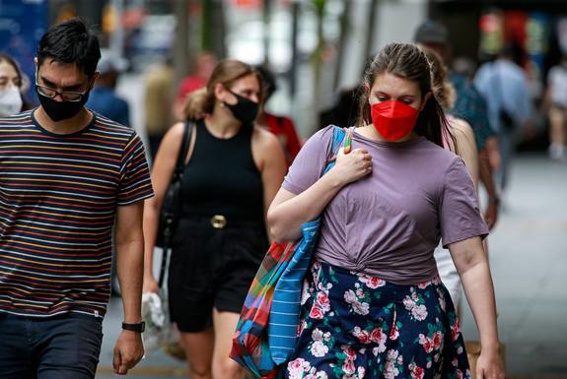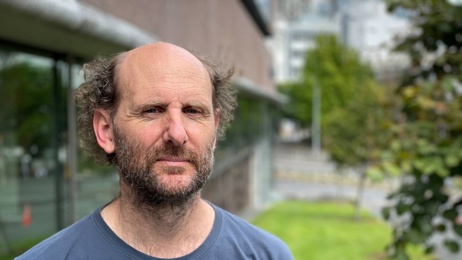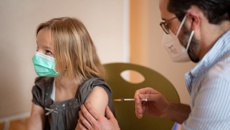
OMICRON LATEST:
* Rod Jackson: Time to vaccinate is running out
* Swarbrick wants inquiry into Covid economic response
* 'Big boost week': Text and email alerts start today for 1m NZers
* NZ Govt bond yields hit post-Covid high as inflation concerns mount
* Podcast: The economic road ahead as NZ reopens
Forecasters estimate more than one million New Zealanders will be infected with Omicron and hundreds will die within the next few months, as the Prime Minister warns the country to "prepare for winter".
The new modelling has prompted warnings from leaders in Māori health and intensive care that the Omicron surge could soon grow much worse, while one expert describes it as useful but still inconclusive without more local data.
It comes as Jacinda Ardern revealed a million Kiwis due for their booster will be reminded by text and email, alongside a promise of $400,000 to rural communities to deal with disruption from Covid.
In her opening statement to Parliament earlier yesterday, Ardern warned it was time to "prepare for winter" with the threat of new variants and the re-emergence of influenza.
As she did so, thousands of anti-mandate protesters gathered on Parliament's lawn, bringing major highways in Wellington to a standstill and promising they were "in for the long haul".
The modelling, released yesterday by Te Pūnaha Matatini modellers under the new title of Covid-19 Modelling Aotearoa, used data from Omicron surges overseas to examine what the variant's progression in New Zealand would look like.
Using February 1 as the inception of a three to four-month outbreak and assuming low transmission, a total of 1.5 million infections were predicted, including 386,400 cases, 11,500 hospitalisations and 460 deaths - if 90 per cent of eligible Kiwis were boosted.
Infections referred to the total number of people with Covid-19 - different from cases which referred to Covid-positive people picked up through testing.
If 70 per cent were boosted in a low transmission scenario, those figures rose to 1.7m infections, 447,000 cases, 13,800 hospitalisations and 560 deaths.
Assuming baseline/medium transmission and 90 per cent eligible booster coverage, 2.4m infections were expected, including 626,000 cases, 19,300 hospitalisations and 840 deaths.
Should transmission be high with 90 per cent eligible booster coverage, 3.3m infections were predicted, 857,900 cases, 28,400 hospitalisations and 1330 deaths.
To date, 57 per cent of eligible Kiwis had received a booster dose, up from 51 per cent on Monday.
Te Pūnaha Matatini modeller Dr Dion O'Neale, who was not involved in this latest modelling, said the work was a "useful start" that reinforced the importance of high booster coverage.
"New Zealand was at this point where we could have had Omicron come in when we had very low booster rates and [the modelling] shows every extra month you can delay that, you're getting more of your population boosted and more protection."
Modelling became a hot topic last week when findings from the United States-based Institute for Health Metrics and Evaluation (IHME) predicted New Zealanders could witness 50,000 infections by Waitangi weekend.
On Waitangi Day, 188 new community cases were announced with a rolling seven-day average of 170.
Yesterday's figures were 202 new cases and a 191 rolling seven-day average, with 14 people in hospital with Covid, including one in intensive care.
O'Neale said IHME's modelling was restricted by less accurate information on New Zealand's current approach to Covid-19, something which yesterday's modelling took into account.
"The team who's done this has, for the last two years, been looking at the New Zealand data and is intimately familiar with what does happen in New Zealand, as opposed to having an algorithm read stuff off a website and plug it straight into a model."
/cloudfront-ap-southeast-2.images.arcpublishing.com/nzme/RZJRJELL3FOBC4QA4MAXQR6VNU.jpg)
Despite new modelling, there was still much that was unknown as to how Omicron would move through New Zealand. Photo / Getty Images
He acknowledged it was still unclear how the Omicron outbreak would play out in Aotearoa, but initial signs saw New Zealand replicating Australian states with less dramatic surges, like Tasmania and South Australia.
"There's already a good signal that we're probably going to be more like South Australia or Tasmania because we've got [case] doubling times that are longer than what they had initially and that's a really good sign."
The modelling contained stark predictions for the health system with peak daily hospital admissions expected to range from 200 to 800, and peak daily hospital bed demand range from 800 to 3300.
College of Intensive Care Medicine chairman Dr Andrew Stapleton said he was confident intensive care could absorb what extra pressure it felt, given the more mild symptoms associated with Omicron.
However, he said there would likely be a regional disparity where smaller hospitals who provided non-invasive ventilation - the treatment Omicron required - in their intensive care units.
"Of the country's ICUs, probably five to six can handle it like the rest of the world but the other 14-15 would be admitting patients to ICU for that level of ventilation and that would have a very significant impact on the functioning of those smaller hospitals," he said.
The modelling noted the possibility of a resurgence of Delta, which Stapleton said would further strain intensive care.
"We're very wary of Delta in the ICU community and a sharp rise would put significant strain on all parts of the health system, including ICU, but it hasn't happened so far, so it's a bit hard to think it would happen now."
The modelling also referenced how communities with low vaccination rates, high comorbidity rates, poorly served by healthcare systems, or other risk factors were likely to be disproportionately affected in an outbreak.
/cloudfront-ap-southeast-2.images.arcpublishing.com/nzme/VH2MH5TJBIK3XAAU24IYVGPZHI.jpg)
Māori health researcher Dr Rawiri Taonui. Photo / Mark Mitchell
It highlighted Māori and Pasifika, who had a higher risk of severe illness if infected and bore a disproportionate health burden in the recent Delta outbreak.
Māori health researcher Dr Rawiri Taonui said Māori were 15 per cent behind the national average on booster uptake as at Monday.
However, he was heartened to see that gap closing since the Government reduced the time between a second dose and booster to three months.
With cases now being found in rural, highly Māori areas like Waimiha, Ruapehu District,
Taonui reinforced the importance of keeping booster and paediatric dose levels equitable to prevent Māori from suffering further under Omicron.
National Party Covid-19 response spokesman Chris Bishop said past modelling had been way off the mark, but he still valued the resource.
"I subscribe to Chris Hipkins' view that it's better to have some modelling than not," citing comments from the Government's Covid-19 Response Minister last week when he compared modelling to weather forecasts.
"The take home point from all the modelling is get vaccinated, get boosted, test regularly and wear masks."
Take your Radio, Podcasts and Music with you









